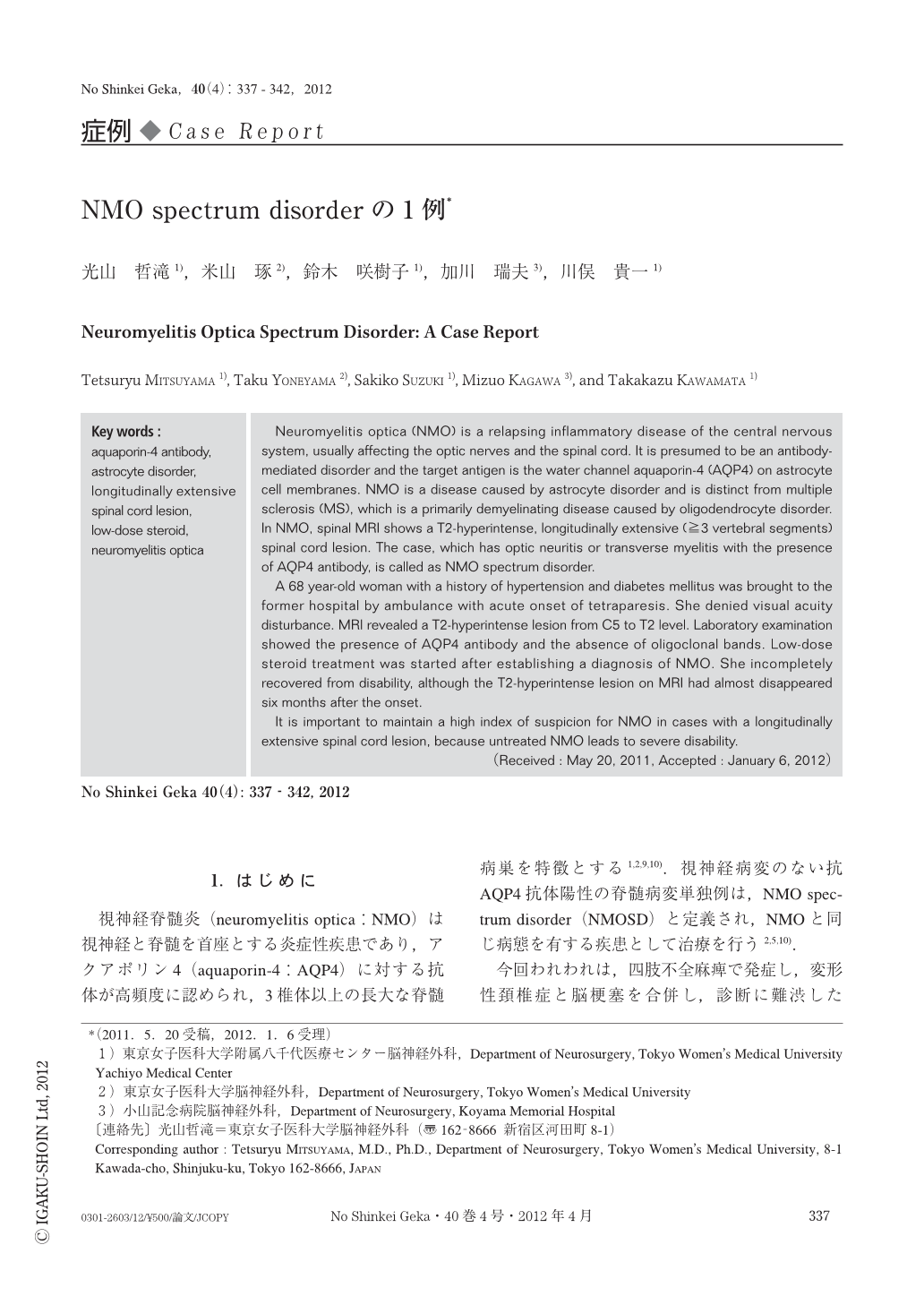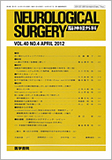Japanese
English
- 有料閲覧
- Abstract 文献概要
- 1ページ目 Look Inside
- 参考文献 Reference
Ⅰ.はじめに
視神経脊髄炎(neuromyelitis optica:NMO)は視神経と脊髄を首座とする炎症性疾患であり,アクアポリン4(aquaporin-4:AQP4)に対する抗体が高頻度に認められ,3椎体以上の長大な脊髄病巣を特徴とする1,2,9,10).視神経病変のない抗AQP4抗体陽性の脊髄病変単独例は,NMO spectrum disorder(NMOSD)と定義され,NMOと同じ病態を有する疾患として治療を行う2,5,10).
今回われわれは,四肢不全麻痺で発症し,変形性頚椎症と脳梗塞を合併し,診断に難渋したNMOSDの1例を経験した.脊髄疾患の治療を行う際に銘記すべき疾患の1つであると考えられたので,文献的考察とともに報告する.
Neuromyelitis optica (NMO) is a relapsing inflammatory disease of the central nervous system,usually affecting the optic nerves and the spinal cord. It is presumed to be an antibody-mediated disorder and the target antigen is the water channel aquaporin-4 (AQP4) on astrocyte cell membranes. NMO is a disease caused by astrocyte disorder and is distinct from multiple sclerosis (MS),which is a primarily demyelinating disease caused by oligodendrocyte disorder. In NMO,spinal MRI shows a T2-hyperintense,longitudinally extensive (≧3 vertebral segments) spinal cord lesion. The case,which has optic neuritis or transverse myelitis with the presence of AQP4 antibody,is called as NMO spectrum disorder.
A 68 year-old woman with a history of hypertension and diabetes mellitus was brought to the former hospital by ambulance with acute onset of tetraparesis. She denied visual acuity disturbance. MRI revealed a T2-hyperintense lesion from C5 to T2 level. Laboratory examination showed the presence of AQP4 antibody and the absence of oligoclonal bands. Low-dose steroid treatment was started after establishing a diagnosis of NMO. She incompletely recovered from disability, although the T2-hyperintense lesion on MRI had almost disappeared six months after the onset.
It is important to maintain a high index of suspicion for NMO in cases with a longitudinally extensive spinal cord lesion,because untreated NMO leads to severe disability.

Copyright © 2012, Igaku-Shoin Ltd. All rights reserved.


